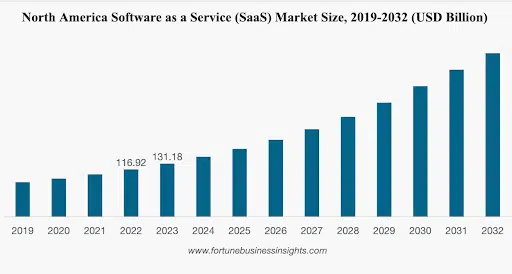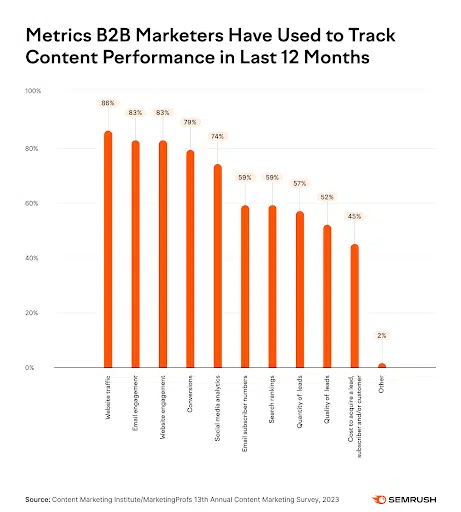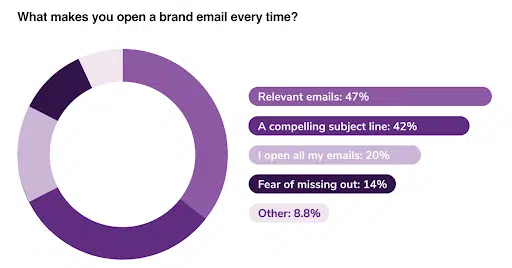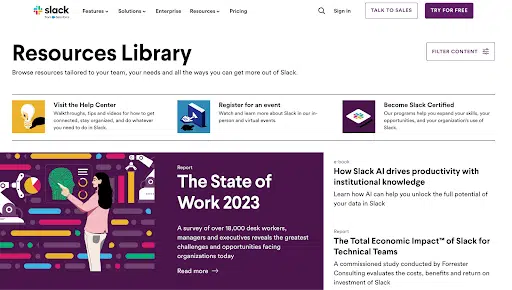In today’s tech-saturated market, the term “growth hacking” has become a buzzword that is often thrown around, but what exactly does it mean and why is it significant, particularly for Software as a Service companies?
In essence, growth hacking is a marketing strategy that places a specific focus on rapid business advancement. This approach, however, differs from traditional marketing as it involves unconventional, low-cost tactics that aim to acquire as many users or customers as quickly as possible.
The Relevance of Growth Hacking in the Tech Industry
Growth hacking came out of the tech industry, where startups with tight budgets needed to find creative ways to achieve rapid growth and outpace their competitors. Successful tech companies like Dropbox and Airbnb are well-known examples of businesses that have used growth hacking to their advantage.
In the realm of SaaS companies, growth hacking has become even more critical due to the subscription model these businesses operate on. With the need to continuously acquire and retain customers to sustain a steady revenue stream, growth hacking offers an incredibly effective strategy to keep user numbers on an upward trajectory.
The Power of Growth Hacking for SaaS Enterprises
For SaaS companies, growth hacking offers several compelling benefits. Growth hacking’s whole intention is to find more customers, faster and cheaper. Because of the nature of growth hacking, your business can reap multiple key benefits from pursuing a growth hacking plan.
- User Acquisition
The most obvious one is the acceleration of user acquisition. Through the implementation of innovative tactics — such as viral marketing or gamification — companies can quickly increase their user base. - User Retention
Growth hacking strategies often involve improving product functionality or user experience, which can enhance user retention and result in long-term customer loyalty. - Decreased Costs
The purpose of growth hacking is to find easily accessible and efficient routes to attract new customers. Through this strategy, you can be more creative and cost-effective, and in turn saving your business’s budget.
Ultimately, growth hacking helps SaaS companies optimize their resources and achieve their goals faster and more efficiently. With the growing SaaS market continuing on a rapidly upward trend, growth hacking can help break through the noise while saving costs.

Fortune Business Insights highlights the growing SaaS market
Growth Hacking: A Critical Strategy for All Tech Companies
While growth hacking is often associated with startups, it’s equally crucial for established tech companies. The dynamic nature of the tech industry is such that companies of any size must continuously innovate to stay ahead. Therefore, growth hacking should be viewed not as an optional strategy but as a fundamental business practice in this industry.
Whether it’s optimizing product features to boost user engagement or implementing referral programs to attract new customers, growth hacking allows businesses to adapt, evolve, and thrive in the competitive SaaS landscape.
Growth hacking is a powerful strategy that SaaS companies, regardless of their size or stage, should leverage to fuel their growth.
By focusing on rapid, sustainable growth through unconventional and cost-effective tactics, companies can not only survive but also excel in the rapidly evolving tech industry. As we delve deeper into the intersection of web design and digital marketing strategies, keeping the principles of growth hacking in mind will be crucial to unlocking your company’s growth potential.
Growth Hacking Strategies shared by TK Kader
Building the Foundation: The Role of Web Design in Digital Marketing
In the ever-evolving digital landscape, where competition is fierce, effective web design is a critical element that SaaS and tech companies can’t afford to overlook. It plays a pivotal role in creating a positive user experience, driving conversion rates, and reinforcing your brand’s message.
When merged with digital marketing strategies, well-executed web design becomes a powerful tool for unlocking growth potential.
The Importance of Web Design in User Experience
The first impression is often the last, and in the digital world, your website is the first interaction many customers will have with your brand. A well-designed website should be intuitive, easy to navigate, and visually appealing – but it’s not just about aesthetics.
Good web design plays a decisive role in user experience. Well-built design is so critical that 88% of users are less likely to return to a site after a bad experience.
UX is about much more than how a website looks, and is also critical to how the site works. It encompasses everything from site speed to navigation, to the way content is organized. In today’s fast-paced world, users expect seamless interactions and instant gratification.
If your website is slow, difficult to navigate, or cluttered, users are likely to abandon it in favor of a competitor’s site. To drive home the importance of an effective website, 47% of users will leave a website if it takes more than 2 seconds to load.
In contrast, a well-designed website that offers a positive user experience can attract and retain customers, encouraging loyalty and repeat business.
Web Design and Conversion Rates
Conversion rate is the measure of your website’s effectiveness in turning visitors into customers. It’s not enough to attract users to your site; you also have to convince them to take the desired action, whether that’s signing up for a newsletter, requesting a demo, signing up for a free trial, or making a purchase.
Good web design can significantly boost your conversion rates. By making your site visually appealing, easy to use, and providing clear, compelling calls to action, you can guide users towards the desired outcome. Moreover, a well-designed website builds trust with your audience, which is crucial for conversion.
Web Design as a Reinforcer of Brand’s Message
Your website is a powerful tool for communicating your brand’s message and values. A well-designed site can help reinforce these elements, creating a strong brand image that resonates with your audience.
Everything from your color scheme to your typography to the images you use can communicate something about your brand. By ensuring these elements align with your brand’s message and values, you can create a cohesive, memorable brand image that enhances your digital marketing efforts.
Web design is not just about making your site look good. It’s a crucial component of your digital marketing strategy, with the power to enhance user experience, drive conversion rates, and reinforce your brand message. By understanding and leveraging the role of web design in digital marketing, SaaS and tech companies can unlock their growth potential.
Mastering Digital Marketing Strategies: Beyond the Basics
Succeeding in the highly competitive SaaS space requires the constant implementation of creative and well-thought-out strategies. While web design plays a key role in presenting your brand effectively to engage and convert leads, digital marketing strategies can bring your offering to the attention of a wider audience, attracting potential leads to your website.
SEO and its Vital Role in Boosting Visibility
SEO arguably acts as the cornerstone of any robust digital marketing effort. A well-designed website won’t make maximum impact without people visiting it, and that’s where SEO comes in. SEO optimizes your website so it ranks higher in SERPs (Search Engine Results Pages), making it more discoverable by internet users.
By aligning your web content with key SEO practices such as keyword optimization, smart link-building, and mobile-first design, you improve your ranking, thereby raising your business presence in the digital space. SEO allows your business to be found by the right people at the right moments.
Winning The Audience Over: Content Marketing for Customer Attraction and Retention
Content marketing is among the most potent player when targeting top-funnel users. This strategy involves creating informative, engaging, value-laden content that solves your consumer’s problems, builds meaningful connections, and bolsters your brand’s authority in your niche market.
Well-crafted content doesn’t feel like marketing – instead, should be interesting, useful, or helpful to your users. For example, project management tool Trello does a great job of creating resources to help improve productivity and connection among remote teams.
Strategically aligning your web design with your content marketing ethos—in terms of design aesthetics, fonts, color-choice, interactive elements, blog space, and more—offers a seamless brand visual experience capable of commanding user attention, encouraging repeat visits, and aiding long-term customer retention.

Key B2B Content Metrics identified by SEMRush
Managing Social Conversations: Social Media Marketing for Increased Brand Awareness and Engagement
More than passive digital billboard spaces, social media platforms have evolved into public forums for prospective customers to engage in a meaningful dialogue with businesses.
Through carefully crafted posts, visceral visual branding elements, and proactive engagement practices— threaded with the brand’s unique persona — businesses can foster deeper relationships with customers, drive traffic to their websites, and substantially boost their growth trajectory.
The Art of Nurture: Retaining Leads Using Email Marketing
Finally, your arsenal of growth-driving strategies would be incomplete without email marketing-based interactions. With a promising ROI of $42 for every $1 spent, the potential of personalized email marketing is twofold: it effectively nurtures your leads, thereby guiding them down the sales funnel, and mortgages them expertly once they’re there, converting them into loyal customers.
In combination with an efficient web strategy, these digital marketing nuances can play a decisive part in unlocking SaaS growth. Strategically merge this quartet, tweak as warranted, and your path to desired scale, customer acquisition, and retention would be elucidated well ahead.
The Perfect Blend: Integrating Web Design with Digital Marketing Strategies
When it comes to harnessing growth potential for SaaS companies, the magic lies in the confluence of web design and digital marketing. A well-designed website, when complemented by a robust marketing strategy, can skyrocket traffic, boost conversions, and ultimately influence the bottom line. In this section, we delve into strategies for coupling web design with various digital marketing facets to drive growth and market dominance.
Embedding SEO Principles into Web Design
Search Engine Optimization (SEO) isn’t just about keywords and content; it’s a potent tool that can be weaved into your web design to enhance visibility and drive organic traffic. Integrating SEO principles into your website design requires a strategic approach, considering both technical and aesthetic aspects. A comprehensive understanding of SEO that is intertwined with design ultimately leads to better outcomes.
A few ways to embed SEO principles into design include:
- Optimize your site’s architecture for SEO
A well-structured website makes it easier for search engine bots to crawl, thereby improving your SEO ranking. Tools like XML sitemaps and robots.txt files are great for guiding search engines through your site. - Balance aesthetics with load times
While visually appealing designs capture attention, excessive graphics can slow down your site, negatively impacting your SEO ranking. Strive for a balance between engaging visuals and fast load times. - Mobile optimization is key
With the majority of internet users accessing the web via mobile devices, a mobile-optimized site is essential. Responsive design adapts to any screen size, enhancing user experience and SEO ranking.
Designing a Website That Bolsters Content Marketing
Content marketing is a powerful tool for attracting and retaining customers. However, without a well-designed website to support it, even the most potent content can fall flat. Design and content need to go hand in hand.
Here’s how to design your site to make the most of your content marketing efforts.
- Design your site for readability
Break up text with headers, bullets, and images to make it easier for visitors to absorb your content. Also, proper use of whitespace keeps your site looking clean and uncluttered. - Include clear, compelling calls-to-action
Your content should guide visitors towards a desired action, such as signing up for a newsletter or requesting a demo. Position your CTAs strategically within your content for maximum impact. - Implement a blog section with easy navigation
A dedicated section for blogs allows for easy content consumption and sharing, ultimately boosting your marketing efforts.
Enhancing Social Media Marketing with Web Design
With the rise of social media, integrating your web design with your social media marketing efforts can widen your reach and improve engagement. Connecting social media and web design creates consistency throughout the customer experience. Interconnections between social media and web design build a world where it’s easy to interact with and understand your brand.
Here are a few tips on how to make your website social media-friendly.
- Include social sharing buttons on your website
Social sharing buttons allow visitors to share your content with their networks, amplifying your reach. - Embed social feeds on your site
On-site social feeds keeps your content fresh and encourages visitors to engage with your brand on social media. - Design a consistent brand image across all platforms
Keeping your website and social media profiles visually consistent strengthens your brand identity and fosters trust with your audience.
Facilitating Email Marketing through Website Design
Email marketing remains a powerful way to nurture leads and keep customers engaged. A well-designed website can support your email marketing efforts and drive conversions. An email delivered to a prospect at the right time can make a huge impact.
In fact, email relevance is the largest driver to driving potential customers to open emails. A study from ZeroBounce showed that nearly half of people will open a brand email if it’s relevant to them.

User motivators to open emails from brands identified by ZeroBounce
Here’s how to make the most out of customer email outreach:
- Create dedicated landing pages for email campaigns
Dedicated landing pages help track the success of your campaign and provide a focused, distraction-free path to conversion. - Include an easy-to-find signup form on your site
This encourages visitors to opt into your email list, expanding your reach. - Design your emails with the same look and feel as your website
Consistency in design builds brand recognition and trust with your audience.
Learning from the Best: Case Studies of Successful Implementations
In unmasking the strategies that have been successful for SaaS companies, we delve deeply into the real-world applications that merged web design with digital marketing. We turn our spotlight on successful integration with SEO, Content Marketing, Social Media Marketing, and Email Marketing.
Web Design Meets SEO: The Slack Phenomenon
Whilst measuring the magnitude of SEO is often challenging, Slack has expertly navigated and harnessed this digital marketing strategy. The popular collaboration tool has scored high on in terms of SEO visibility. By integrating seamlessly with their web design, Slack allows its interface to be easily indexed by search engines, thereby making it more visible to users searching online.
Furthermore, Slack offers comprehensive guides on using its tools effectively, which is a strong magnet for organic traffic. Coupled with their powerful keyword-rich SEO content, Slack enjoys high ranking in its niche market.

Slack’s comprehensive Resources Library
Content Marketing Intertwined: The HubSpot Case
HubSpot is renowned, not just for its incredible B2B marketing, sales, and service software suite, but also for how the firm engaged content marketing and web design symbiotically. The company’s blog layout, accessible tools, and engaging content contribute significantly to its prominence.
It employs a simple yet effective design on its blog pages, yielding to user-friendliness while driving home the influence of their content. HubSpot goes beyond mere content delivery by using distinct design elements to enhance content appeal, interplay ease, and readability.
Social Media Marketing Embroidery: The Spread of Canva
An embracement of social media ruins boundaries to product-viewer interaction. Canva—the graphic design tool has exploited this very feature and combined it brilliantly with its web design.
Each Canva design seamlessly posts to major social media platforms right from the app with a few clicks. Learning from Canva’s strategy, we realize the competence of excellent web design supporting ease-of-use in spread, thus, using user’s interaction to run social media “advertisement”.
Email Marketing in Design: MailChimp’s Wonders
Mailchimp is arguably the cornerstone for email marketing services and attributed to the link between attractive web design and email marketing’s effectiveness. Mailchimp designs cater to their bedrock role of email communication by making their platform visually engaging, simultaneously straightforward and intuitive to use.
They provide subscribers with tailored experiences through dynamic email templates that are both adaptable and enjoyable to interact with. We foreground the direct impact the integration of web design and email marketing wields on user’s return – a vital consideration for growth.
Merging It All Together
Well-initiated steps towards seamless inter-woven schemes, as mentioned in the cases above, will indeed unlock your SaaS firm’s full potential. Web design maneuvers can significantly leap your digital marketing game forward—as evident from the case studies—a journey growth-hackers and SaaS customer-acquisition-asphalters will gladly embark on.
Implementing These Strategies in Your Business
Now that we’ve explored the synergy between web design and digital marketing strategies, let’s dive into the actual implementation. As time and resources can be a constraint for many SaaS and tech companies, implementing an integrative approach is crucial. Here are some practical strategies and tips to help you get started.
Integrating Web Design with SEO
SEO and web design go hand in hand – it’s a two-way street. The goal is to design a website that’s not just attractive to users but also to search engines.
- Prioritize clean, structured design, with easy navigation and quick loading times.
- Use keyword research to inform your design decisions, for instance, use keywords in your headers and titles to delineate content.
- Consider having an SEO-friendly URL structure that reflects your site’s hierarchy.
- Leverage responsive design for mobile optimization, as search engines reward sites that load well on mobile devices.
Designing a Website that Supports Content Marketing
Content is king, but strong content is only as good as the design it’s built on. A well-designed website supports and showcases your content marketing strategy.
- Start by having a dedicated blog section for educational and informative content.
- Make use of white space, visuals, and various multimedia elements to make your content more engaging.
- Ensure a seamless user experience with easy navigation to your content resources.
- Design your website with a strong focus on your audience and their needs, this way, they’ll find the value in the content you share.
Enhancing Social Media Marketing through Web Design
Your website and social media platforms should be interconnected, providing a seamless experience for your audience.
- Dedicate space on your website for social share buttons, and incorporate social media feeds for added interaction.
- Create visually appealing snippets of content that can be shared across various platforms.
- Remember, a shareable website is a more visible website.
Design Strategies for Effective Email Marketing
Lastly, design your website in a way that it naturally leads your audience towards subscribing to your newsletter or email offers.
- Create compelling and visible calls-to-action that encourage subscription.
- Consider having a lead magnet on your website, such as an ebook or a free trial, to collect email addresses.
- Design your email marketing campaigns with a similar aesthetic as your website to maintain visual consistency.
Find the Right Partner to Catapult SaaS Growth
Success lies at the intersection of web design and digital marketing. By integrating these strategies, you’ll not only increase your brand’s visibility but also create a more enjoyable and fulfilling experience for your audience. Implement these strategies in your business and propel your journey towards growth.
Looking for a great partner to set you up for growth hacking success? Reach out to Insivia and let’s see how we can drive your business’s growth together.
